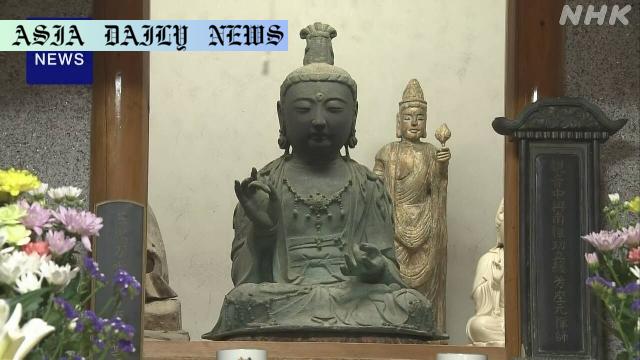Buddhist statue returns after 11-year legal dispute

The Theft and the Dispute
The story of the Buddhist statue, stolen from the Kannonji Temple on Tsushima Island in Japan’s Nagasaki Prefecture, is a fascinating tale of resilience, cultural significance, and international legal battles. This religious artifact, after being stolen in 2012, reemerged in an unexpected location—Busuksa Temple in central South Korea. What followed was a prolonged legal battle that caught the attention of the global community. Early in the dispute, Busuksa Temple laid claim to the statue, arguing that it had initially been taken from Korea centuries earlier. The claim added a complex historical dimension to the case, challenging not only the legal ownership of the object but also delving into deeper historical wounds and cultural dynamics between the two nations.
Resolution Through Law
Years of legal proceedings eventually culminated in a significant ruling by South Korea’s Supreme Court. After examining the historical claims and evidence presented by both parties, the court ruled in favor of Kannonji Temple, acknowledging it as the rightful owner of the statue. This decision brought closure to an 11-year saga and signified the resolution of a sensitive cultural dispute. The battle over the artifact underscored the challenges of balancing cultural heritage with historical grievances and set a precedent for addressing similar disputes in the future.
Return of the Sacred Artifact
On Monday, after a ceremonial service at Busuksa Temple, the revered Buddhist statue was officially handed back to Kannonji officials. Approximately 30 members from Kannonji Temple, as well as several regional government representatives, observed a closed-door service to commemorate its return. Priest Tanaka Setsuryo expressed relief and joy, stating that the statue’s homecoming signified peace and closure. The people of Tsushima Island welcomed the artifact with open arms, celebrating the cultural and spiritual heritage it represents. Plans to display the statue in a special exhibition at the Tsushima Museum from Thursday underscore the importance of its history and cultural significance.
Symbolism and Preservation of Cultural Heritage
The return of the Buddhist statue is more than just the resolution of a theft; it is emblematic of the enduring power of cultural heritage and the importance of preserving religious artifacts. It serves as a reminder of the value placed on historical and spiritual symbols by communities worldwide. Moreover, this event highlights the role of legal frameworks in resolving international disputes related to cultural property. With its journey spanning over a decade and crossing borders, the statue’s story resonates deeply, showcasing the universal importance of respecting and preserving cultural identity.
Future Exhibit and Public Engagement
Looking ahead, the Tsushima Museum plans to showcase the artifact in a special exhibition. This event offers an opportunity for the public to reconnect with this piece of their cultural history and appreciate its significance. The exhibition is anticipated to draw visitors from across Japan and potentially from other countries, encouraging dialogue about the shared responsibility of embracing and protecting cultural heritage. Such events contribute not only to local tourism but also to the global recognition of the importance of preserving artifacts against theft and loss.
Commentary
The Cultural Significance of the Artifact
The Buddhist statue’s return to Kannonji Temple resonates deeply as a poignant tale of heritage and identity. Such artifacts carry profound cultural value, serving as links between history and the present. The statue’s long absence and eventual return highlight the challenges faced by nations and communities in retrieving their cultural treasures. This event emphasizes the importance of international cooperation and the rule of law in addressing disputes rooted in historical complexities.
Cultural Diplomacy and Historical Healing
The legal battle over the statue not only involved questions of ownership but also underscored the lingering tensions between Japan and South Korea over history and heritage. While South Korea’s claim to the statue added layers of complication, the eventual resolution demonstrates the potential for diplomacy and legal mechanisms to foster understanding. Such incidents remind us of the need to reconcile historical grievances while respecting the cultural and spiritual traditions of each nation.
Preservation as a Shared Responsibility
This case sheds light on a broader issue: the global responsibility to protect and preserve cultural heritage. The theft of cultural artifacts is a challenge faced by nations worldwide, and recovering such treasures is a testament to the dedication of those who seek justice for communities that hold these artifacts dear. The return of this statue is a victory not just for Kannonji Temple but for cultural preservation efforts across the globe.
The Road Ahead
As the statue begins a new chapter at Tsushima Museum, it invites dialogue about the role of cultural artifacts in shaping national and regional identities. Through exhibitions and public engagement, the artifact will not only tell its story but also inspire conversations about protecting cultural heritage for future generations. Its return is a success story that showcases the balance between legal resolution, cultural appreciation, and historical sensitivity, setting a meaningful precedent for future efforts in artifact repatriation.


